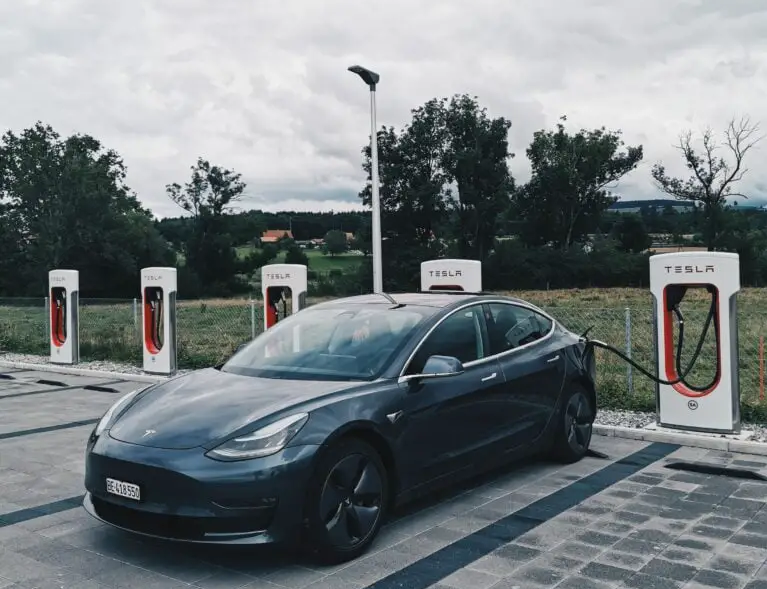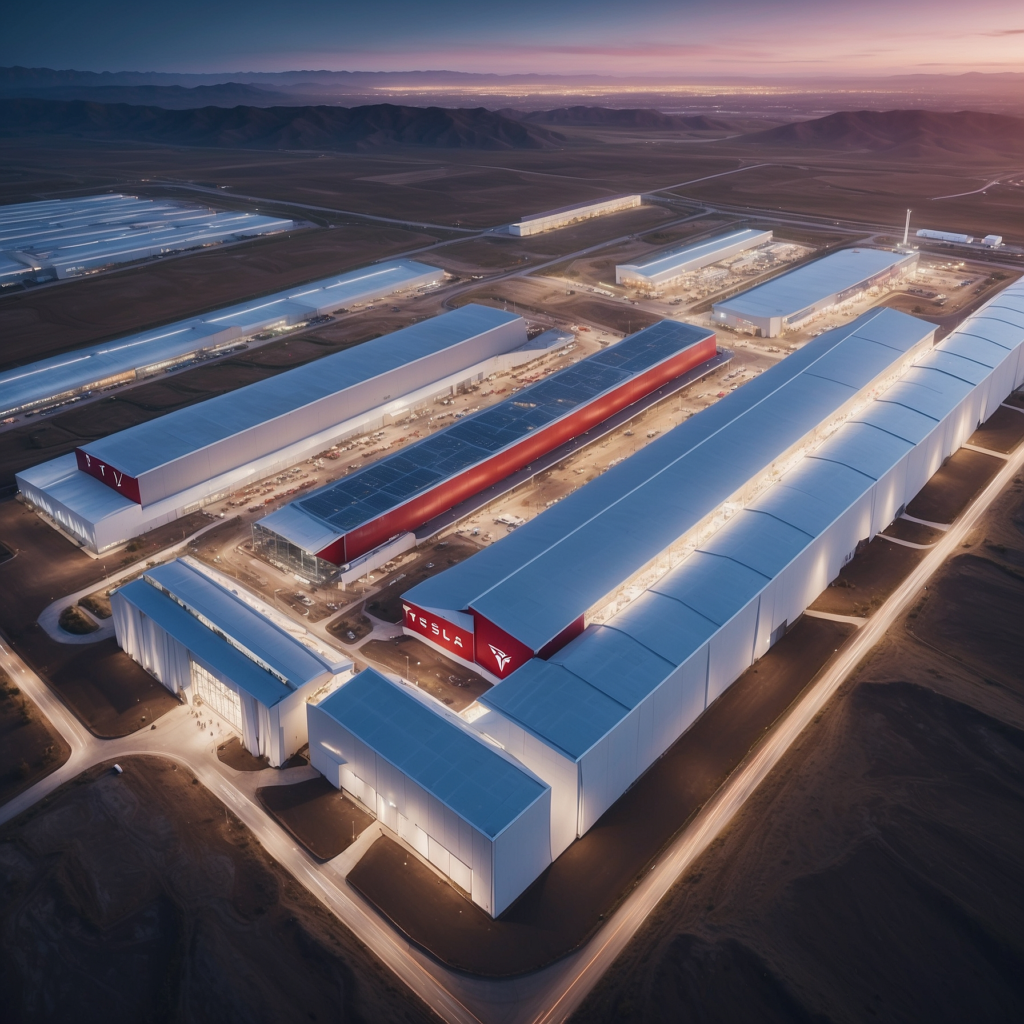Imagine running a business where you control everything from the raw materials to the final product sold to customers—sounds like a dream, right? Well, Tesla made it a reality, and it’s not just any reality; it’s the kind that turns small sparks into big profits. This strategy is known as Vertical integration. (You can learn more about it here: All about Vertical integration)
Tesla’s vertical integration strategy has set the stage for a whole new level of business efficiency. They don’t just drive electric vehicles but also drive down costs and rev up profit margins. But it’s not all smooth driving on autopilot. Tesla’s journey to becoming a vertically integrated powerhouse involved plenty of high-speed turns, pit stops, and a few near-collisions.
With a strategy that stretches from mining the essential minerals for its batteries to skipping dealerships and selling directly to customers, Tesla has created a unique business model that many small business owners and entrepreneurs find both inspiring and intimidating.
Here’s where the twist comes in: going all-in on this strategy means dealing with some serious upfront investments, navigating through complex operations, and occasionally hitting some speed bumps.
Whether you’re a small business owner thinking about taking control of your supply chain or an entrepreneur wondering how to scale up without losing your shirt, there’s something here for everyone.

Tesla is considered one of the most vertically integrated companies in the world, controlling around 80% of its supply chain. This includes:
Why all these efforts to integrate? Well, Tesla has gained a competitive advantage in the automobile industry by applying this strategy. Let’s see its benefits to this company and the associated pitfalls of this strategy.
You know how Elon Musk is always doing things his own way? Well, his stance on patents is no different. He’s famously said, “Patenting is for the weak,” which is so Elon, right? Instead of locking down every idea with legal red tape, Tesla’s strategy is all about speed, agility, and endless innovation. It’s like they’ve got the pedal to the metal and they’re not slowing down for anyone.
This philosophy is a key component of Tesla’s integration strategy, allowing the company to control almost every aspect of its production process.
By not obsessing over patents, Tesla sidesteps the often cumbersome, time-consuming, and costly legal battles associated with protecting intellectual property. This approach aligns with their strategy of rapid development and quick implementation, keeping Tesla ahead of the curve.
For example, while other companies are busy patenting a battery design that might be outdated in a year or two, Tesla’s already refining that tech and cranking up production. They’re not just building better batteries—they’re building them faster than anyone else. It’s like watching someone bake cookies faster than you can even preheat your oven.
Tesla’s ability to pivot quickly—whether it’s adapting new technologies, refining manufacturing processes, or adjusting supply chain strategies—stems from its commitment to rapid execution. This agility enables Tesla to implement changes and improvements almost instantly, often leapfrogging traditional automotive companies bogged down by more rigid, fragmented operations.
The lesson here for small business owners is profound: don’t get trapped in the patent race when you can be innovating and improving your product or service. It’s not just about protecting what you’ve created; it’s about constantly pushing the envelope, staying nimble, and keeping competitors perpetually playing catch-up.
Musk’s approach shows that sometimes the best defense isn’t building walls (or patents) but moving so fast that competitors simply can’t keep up!
Tesla’s got cost control down to a science. By handling so many stages of production in-house, they’re able to cut down on costs and fatten up those profit margins. Let’s just say they’re pros at keeping the lights on without breaking the bank.

Teaming Up with Miners
Tesla doesn’t just wait around for raw materials—they get right in there and make deals directly with mining companies. By locking in long-term contracts, they’re able to snag lower prices and keep the supply chain flowing smoothly.
Take lithium, for example, in 2020, Tesla made a five-year deal with Piedmont Lithium to supply spodumene concentrate (a fancy name for the stuff that eventually becomes lithium). The best part? It’s all sourced right here in the U.S., meaning Tesla doesn’t have to depend on overseas suppliers, and it helps keep their costs steady.
So yeah, Tesla’s not just building cars—they’re building relationships. And those relationships are helping them keep costs low and profits high.
By cutting out intermediaries, Tesla pays less for these critical materials and gains more control over supply and pricing, shielding the company from price volatility that often impacts the broader market.
According to reports, Tesla’s direct partnerships with these mining companies have allowed it to bypass traditional supply chain markups and reduce material costs significantly.
These savings have been a key factor in reducing the overall cost per kilowatt-hour of Tesla’s batteries, which dropped from $230/kWh in 2013 to under $100/kWh in recent years.
Analysts have highlighted that Tesla’s involvement in the nickel market, particularly through agreements with companies like Vale, has helped stabilize nickel costs during periods of market volatility. This stability is crucial, as nickel is one of the most expensive components in Tesla’s batteries, directly affecting profit margins.
Tesla also signed an agreement with Syrah Resources, a company that operates one of the largest graphite mines in the world located in Mozambique. Tesla sources active anode material for its batteries, which is processed at Syrah’s plant in Vidalia, Louisiana.
The partnership with Syrah Resources provides Tesla with a reliable, low-cost source of graphite, reducing dependence on Chinese imports. Tesla will offtake the majority of the graphite at a fixed price for an initial term of four years.
This move not only lowers costs but also stabilizes graphite costs during periods of market volatility. It also aligns with Tesla’s strategy of sourcing materials from regions that match its environmental and ethical standards, which is increasingly important to its brand value.
Innovations with a side of savings
Tesla’s got a pretty sweet deal going with its in-house R&D. They’re constantly tweaking their battery chemistry to make them cheaper, lighter, and pack more punch. Case in point: the 4680 battery cells they whipped up. These things are bigger, badder, and more efficient than the old models.
Because Tesla makes its own batteries, they’ve been able to simplify the whole process. The 4680 cells, for example, have fewer parts and need less work to put together, which means Tesla is saving both time and cash.
And let’s talk cobalt—it’s pricey, and getting it ethically is a whole other headache. So, Tesla’s been working hard to cut down on cobalt use, swapping it out for more common, less expensive metals like nickel. This not only brings down costs but also avoids the drama that comes with relying on shaky cobalt supply chains.
Tesla doesn’t just assemble batteries; it also integrates the production of individual battery components, such as electrodes and cells, within the same facilities. This integration eliminates the need to purchase parts from multiple suppliers, cutting costs and reducing logistics complexities.
These advancements reduce the cost of materials per battery, improve range, and simplify the manufacturing process.
A recent financial report revealed that Tesla’s vertical integration strategy has led to a 15% reduction in production costs over the past two years, contributing to higher profit margins.
Tesla’s direct-to-customer (DTC) sales strategy has significantly improved its profitability as part of its vertical integration strategy. The key reasons include lower expenses, eliminating dealership costs, and enhancing customer experience.
Lower Expenses
Without all those dealerships to worry about, Tesla is able to keep its selling, general, and administrative (SG&A) costs way lower than the competition. Take Ford, for example—their SG&A costs for 2023 are almost four times higher than Tesla’s, even though Ford’s only about 50% bigger. It’s like Ford’s running a whole bunch of extra errands that Tesla doesn’t have to bother with. By skipping the dealership headaches, Tesla avoids extra costs that don’t even help sell cars. More savings = more profits!
No More Dealership Markups: Say Goodbye to Price Gouging!
In the old-school dealership world, dealers love to slap on those sneaky markups, driving up prices and driving customers nuts. But Tesla’s direct sales model? It wipes out those extra costs, meaning no more dealer shenanigans. This lets Tesla keep prices competitive, make customers happy, and pocket more of the profits on each car sold.
A report from 2023 shows just how much this has shaken things up for traditional dealerships. In California alone, Tesla’s sales approach cost dealerships an average of $700,000 in lost gross profit per dealer in 2022. That’s the price of cutting out the middleman—Tesla keeps the cash, while the dealerships are left feeling the pinch!
Enhanced Customer Experience and Feedback
Tesla’s online sales model allows customers to customize and order vehicles directly from the company, which simplifies the buying process. This convenience has led to increased customer satisfaction and loyalty, driving repeat purchases and referrals.
Direct sales also enable Tesla to respond quickly to customer orders without the delays often associated with dealership inventory. This agility not only enhances customer satisfaction but also allows Tesla to manage production more efficiently, aligning supply with demand.
Closely engaging directly with customers helps Tesla gather valuable feedback, trends, and data to optimize sales strategies, refine inventory management, and offer personalized upselling opportunities. A study published in the Harvard Business Review highlighted how this trend-driven approach contributes to higher conversion rates and sales efficiency.
Tesla’s vertical integration fosters a culture of innovation; its in-house software and firmware development allows for over-the-air updates, a key differentiator.
The over-the-air software updates help to fix issues remotely, reducing the need for expensive physical recalls and minimizing downtime for customers. This integration helps control servicing costs and boosts profitability.
It allows the company to constantly improve vehicle performance and features, giving them an edge in technological innovation.

Tesla develops its own software for Autopilot and in-car infotainment, avoiding the need to pay third-party software licensing fees. This in-house development enables it to roll out frequent updates that improve vehicle performance and safety, adding value without significant additional cost.
The in-house software manufacturing also allowed them to respond quickly to supply chain disruptions like the 2020 to 2023 global chip shortage. Unlike traditional automakers that rely on suppliers for specific software tailored to their vehicles, Tesla was able to quickly modify its software to accommodate different semiconductor chips and was able to maintain production levels while many competitors faced significant setbacks.
This flexibility enables Tesla to substitute alternative chips without the lengthy process of redesigning vehicle systems, allowing for faster adjustments in production.
As a result of this strategy, Tesla reported an impressive 87% increase in vehicle production in 2021, reaching a record high of 308,000 vehicles. This growth contrasts sharply with the struggles faced by many traditional automakers, which experienced significant production cuts due to the chip shortage.
When it comes to a business strategy, it’s easy to get swept up in the allure of a groundbreaking idea. But the reality? Ideas alone are rarely the magic bullet to success. It’s the execution—how swiftly and effectively a strategy is put into action—that truly sets a company apart. For small business owners, this insight is critical, especially when considering the complexities and costs of vertical integration.
Vertical integration can be a game-changer, however, it’s not just about the idea; it’s about how that decision is carried out. For small businesses, the challenge isn’t just in having the idea of bringing processes in-house but in navigating the intricate logistics, investments, and operational adjustments that follow.
Execution, in this context, involves meticulous planning, robust coordination, and a relentless focus on the customer. Missteps in these areas can turn a promising strategy into a costly endeavor. A flashy idea, no matter how innovative, means little without a solid execution plan.
What truly sets Tesla apart is not merely the ambition of these ideas but the flawless execution behind them. Tesla has managed to streamline operations in ways that few companies have achieved.
The company’s Gigafactories are not just a concept; they are well-oiled machines pumping out in-house products at a scale and efficiency that its competitors struggle to match. This success is not just about Elon Musk’s vision; it’s about Tesla’s relentless focus on perfecting every detail of the production process, investing in the right technologies, and scaling operations rapidly and efficiently.
Implementing vertical integration requires substantial upfront investments in facilities, equipment, and technology.
For example, its Fremont Factory was purchased from Toyota and General Motors in 2010 for approximately $42 million. This facility has since been transformed into a major production hub for Tesla’s electric vehicles, including the Model S, Model X, Model 3, and Model Y.
The initial investment for Gigafactory 1 (Nevada) was estimated at around $5 billion. This facility is designed for the mass production of lithium-ion batteries and electric powertrains.
These high initial investments can strain the company’s financial resources and limit its flexibility to pursue other growth opportunities.
A 2020 study indicates that small and medium-sized enterprises (SMEs) face high mortality rates, with various factors contributing to their failure, including financial mismanagement and strategic missteps like poorly executed vertical integration strategies. This shows small businesses must be prepared to address the potential negative consequences of vertical integration, such as increased financial strain.
Research indicates that many small businesses that invest heavily in vertical integration may struggle to pivot if market conditions change unexpectedly.
For example, Modcloth is a popular online retailer specializing in vintage-inspired clothing. After experiencing growth, the company pursued vertical integration by managing its own inventory and manufacturing some of its products directly.
The high cost of setting up and managing production operations, combined with the complexities of supply chain management, stretched the company’s resources thin. Modcloth faced cash flow problems and operational inefficiencies. It was eventually sold to Walmart in 2017. The acquisition was partly due to Modcloth’s inability to sustain the heavy costs associated with its vertical integration strategy.
This shows the capital-intensive nature of controlling both production and retail can be overwhelming without adequate funding. So, a robust strategy to manage supply chain complexities is needed for small businesses to implement this strategy.
Tesla’s integration strategy, while successful, also brought significant complexities that have affected its operations. Managing everything from raw material procurement to production and sales has introduced numerous challenges, including operational inefficiencies, management difficulties, and increased risks associated with scaling.
For instance, Tesla paused production at its Gigafactory Berlin-Brandenburg in Germany for two weeks in January 2024 due to delays in parts deliveries caused by attacks on ships in the Red Sea disrupting shipping routes. This forced Tesla to suspend most vehicle production at the factory from January 29 to February 11.
Also, Tesla has been working on plans for a new ‘Gigafactory Mexico’ near Monterrey, with an estimated investment of $10 billion. However, the expected completion date has been pushed back from mid-2024 to 2025 or possibly 2026 due to a combination of factors, including global economic uncertainties, changing market conditions, and shifts in Tesla’s overall production strategy.
While Gigafactory Shanghai has been a success for Tesla, it has also encountered production disruptions attributed to upgrades and preparations for new model launches. For instance, in September 2023, deliveries from the factory decreased by 12% compared to the previous year due to upgrades for the launch of the new Model 3.
These examples illustrate how the complexities involved in ramping up production at Tesla’s Gigafactories, such as ensuring timely delivery of components, managing upgrades, and adapting to external disruptions, have led to production delays and pauses in the past.
Overcoming these challenges is crucial for Tesla to achieve its ambitious production targets.
All these indicate that integrating vertically can lead to operational complexities that require robust management. Small businesses should ensure they have the resources and expertise to handle these challenges before pursuing integration.

Email subscription is available ONLY TODAY (oh, okay, and tomorrow).
Surely, we respect your inbox! Unsubscription works every day.

We’d love to tailor your experience — which of these best describes you?